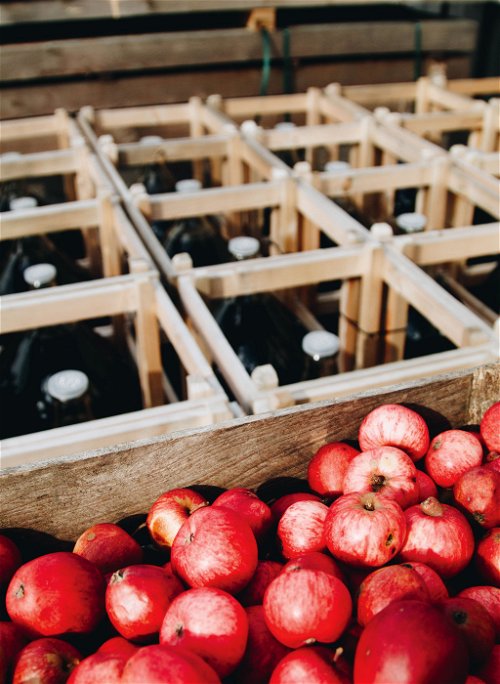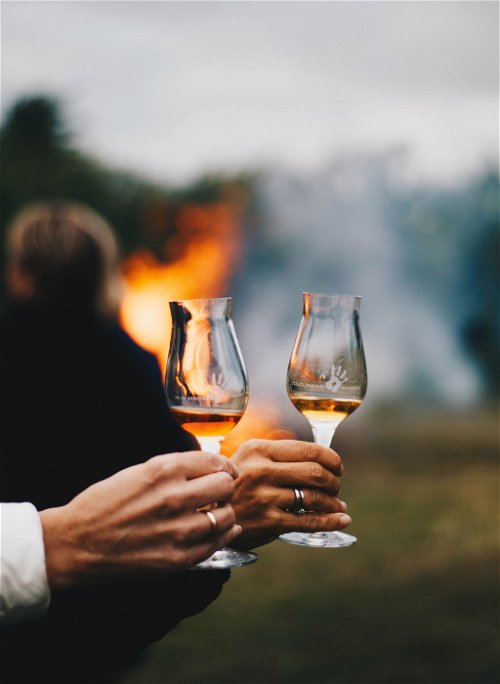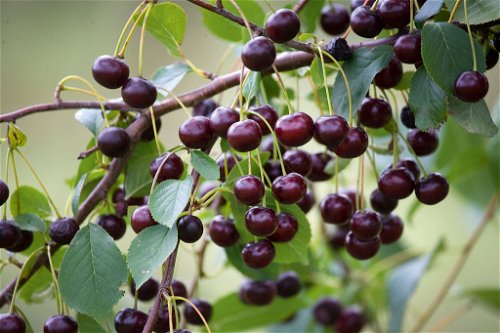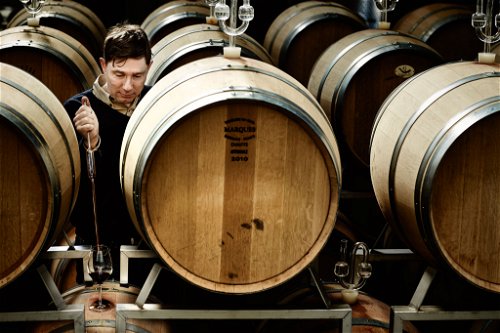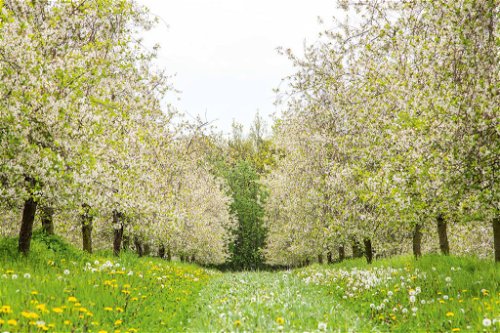Golden drops: Why Scandinavia's fruit wines are booming
Fruit and berry wines have been experiencing a boom in Scandinavia for many years. The producers are imaginative, the products unique and absolutely local.
It is not only on the plate that the far north has made a leap in quality in recent decades. Inspired by the New Nordic Cuisine, which began to revolutionise the gourmet world in the early 2000s, several fruit producers decided to refine their fruit and berries instead of selling them at low prices.
The best example of this is the Frederiksdal estate, which produces cherry wine on the island of Lolland in the south of Denmark and is now one of the largest wineries in the country. The owner and farmer Harald Krabbe had originally considered clearing his 25 hectares of the old Danish cherry variety Stevnsbær, as the sale of cherries was no longer profitable. However, a meeting with passionate wine lover and journalist Morten Brink Iwersen and chef Jan Friis-Mikkelsen changed Krabbe's mind at the last minute. "I knew nothing about wine when Morten and Jan convinced me to produce cherry wine.
I was used to selling cherry juice on the open market, where the buyer determines the price, which was not profitable. I was therefore enthusiastic about the idea of creating a product that is made from the best possible raw material and reflects our unique terroir," says Krabbe, whose cultivation area now covers 38 hectares.
Today, Frederiksdal's cherry wines are the drink of choice for many Danes to accompany the classic Danish Christmas dessert Risalamande, a cold rice pudding with vanilla and warm cherry sauce. With their concentrated dark fruit and fine balance between acidity and sweetness, Krabbe's wines, which are made from nine different varieties, are also ideal accompaniments to game, pepper steak, a good piece of blue cheese or dark chocolate.
Baltic tradition
While the new wave of Nordic fruit and berry wines is gaining recognition, it is important to note that the Baltics, especially Estonia and Latvia, have a deep-rooted tradition of fruit and berry wine production that goes back centuries.
These countries have long used local fruits and berries such as apples, blackcurrants and raspberries to produce a variety of wines. This tradition is being revived and modernised by contemporary producers who combine historical methods with innovative techniques. Latvian and Estonian wineries, for example, are known for their unique fruit wines, which appeal to both traditional and modern palates. The Baltic region's historical knowledge of fruit wine production provides a rich source of inspiration that complements the burgeoning fruit wine scene in Denmark and Sweden.
Among the best-known producers in the Baltics are Jaanihanso and Tori Siidritalu in the west and east of Estonia respectively, which are famous for their excellent artisan ciders, while Murimäe is on everyone's lips thanks to its sparkling redcurrant wines.
Although the production of grape wine is on the rise in Denmark and southern Sweden, it still encounters climatic obstacles. Other fruits such as apples, pears, but also strawberries, raspberries, currants and the aforementioned cherries are much better adapted to the Nordic climate.
The berries generally ripen earlier than most grape varieties. In addition, apple varieties, for example, thrive particularly well in the cold Nordic climate and can develop a high intensity of flavour during the comparatively longer ripening period. One winery that does this particularly well is Cold Hand winery near Randers in north-eastern Denmark. They have gradually specialised in various fruit and berry wines, but the flagship products are the fantastic ciders, which can be found on the wine list at the legendary Copenhagen Geranium, for example.
Inspired by ice wine
The production of cider is inspired by ice wine: the apples are pressed and the juice frozen. The juice then thaws outdoors at sub-zero temperatures, where the cold binds the water in the juice, while the sugar, acid, aroma and colour drip off like a thick syrup, leaving only the concentrated essence of the fruit juice. The result is a true explosion of apple flavour with a hint of caramel and a wonderful balance between sweetness and acidity.
"Many of those who have ventured into making wines from Danish fruit and berries have been inspired by the 2004 Nordic Cuisine Manifesto and the many up-and-coming Nordic restaurants," says Jens Skovgaard, the brains behind Cold Hand Winery.
What he has increasingly noticed in recent years is that fruit wine is playing an ever more important role in the gastronomy scene:
I found it somewhat paradoxical that many restaurants only used local ingredients and served wines from France or Italy. Something has changed in this respect, and more and more restaurants are starting to create drinks menus that only feature local plants. For example, the Michelin-starred 'Domestic' in Aarhus, which now offers an all-Danish drinks menu.
Ciders are also on the rise in neighbouring Sweden. Not least because of producers such as Brännland on the Swedish east coast, which also specialises in apple ice wines, which were served at the 2023 Nobel Prize Dinner, among other events.
Speaking of apples, they are also at the heart of an ever-growing range of Scandinavian sparkling fruit wines, which can be served as an aperitif or as an accompaniment to fish, shellfish and desserts. The sparkling apple drinks are produced using the classic champagne method, among other things. A process that is also used at the Cold Hand Winery.
The Andersen Winery, also from Denmark, has specialised in the production of complex sparkling wines from old Danish apple varieties and berries and has made a name for itself in recent years. Not least because sparkling fruit wines have now become a trend. "The restaurants have received our sparkling wines very well. Sommeliers enjoy working with them, they are easy for guests to understand, and they are also versatile," explains Jens Skovgaard.
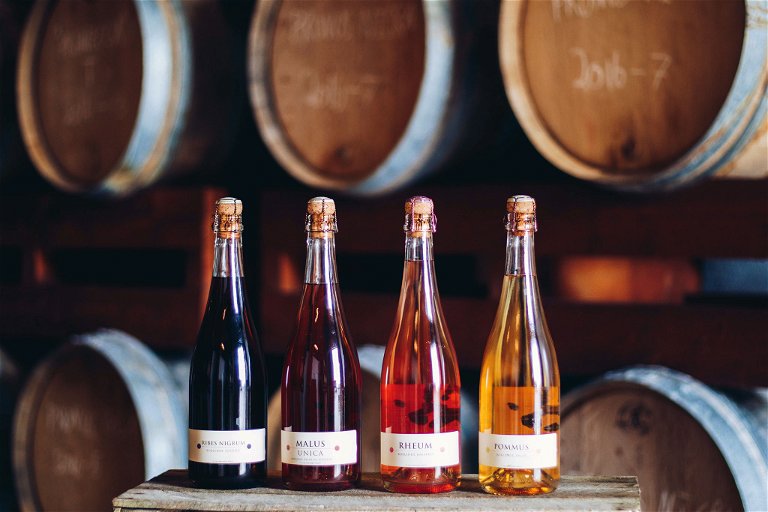
The future is dry
The first wave of Scandinavian fruit and berry wines was undoubtedly characterised by sweetness. This is hardly surprising, as sweet fruit wines are popular and often win medals in competitions. However, the challenge for producers of such wines is the same as for producers of sweet wines from regions such as Tokaj, Sauternes or the Moselle: consumers today drink less sweet wine than in the past. "It takes a lot of work to teach consumers that residual sweet wines can be used for more than just desserts. We still have a lot of educational work to do in this respect," says Harald Krabbe from Frederiksdal.
Jens Skovgaard is also aware that it is an advantage to have dry wines in the range, which is why Cold Hand Winery has launched a range of dry ciders, which he believes will play an increasingly important role in Nordic fruit and berry wines in the future. "The dry wines are very well received. The truth is that most people drink dry wine with food, and we can easily make it from apples. I believe that we will see many more dry berry and fruit wines in the future."
Don't miss out!
Sign up now for our newsletter.

